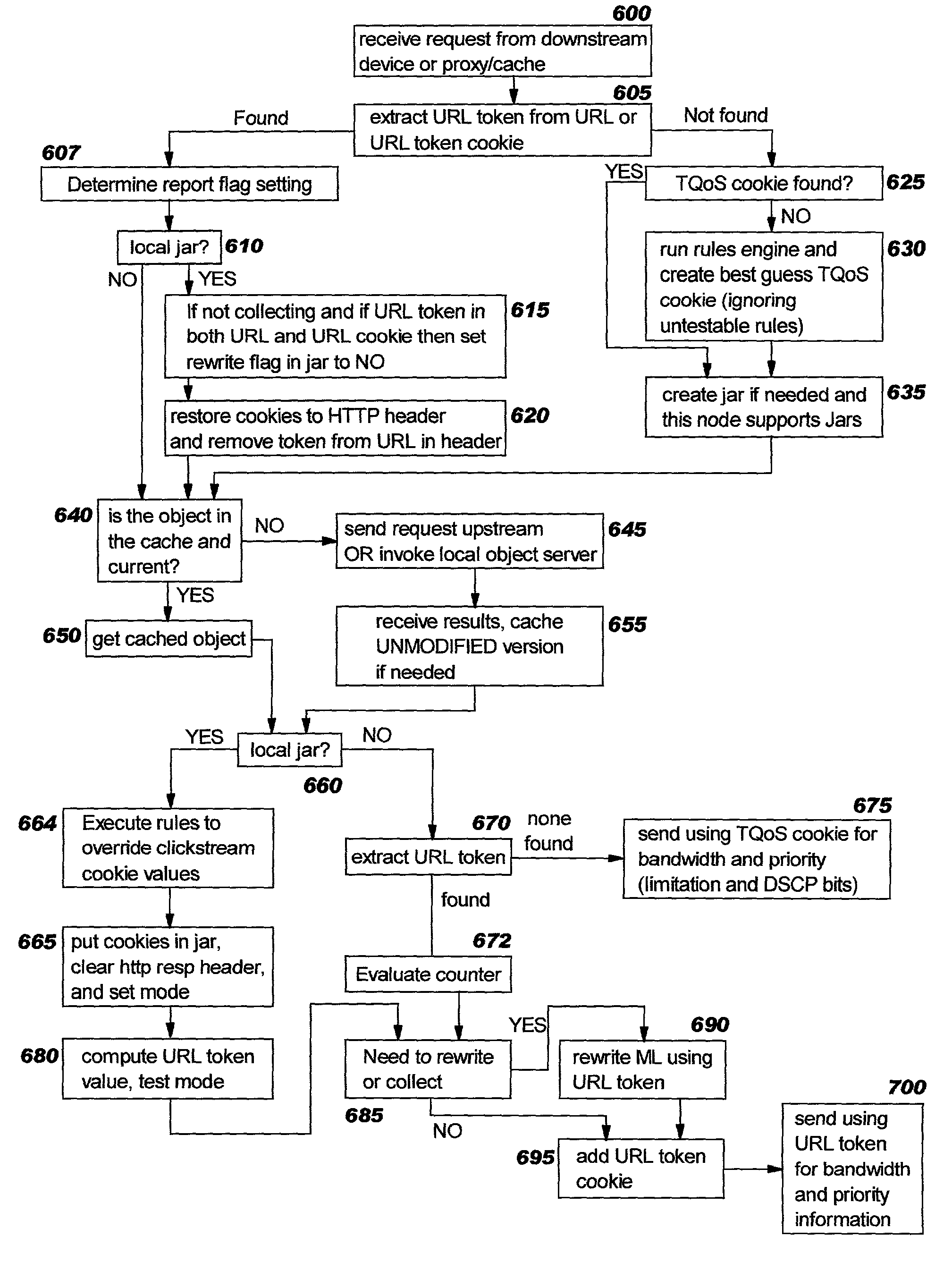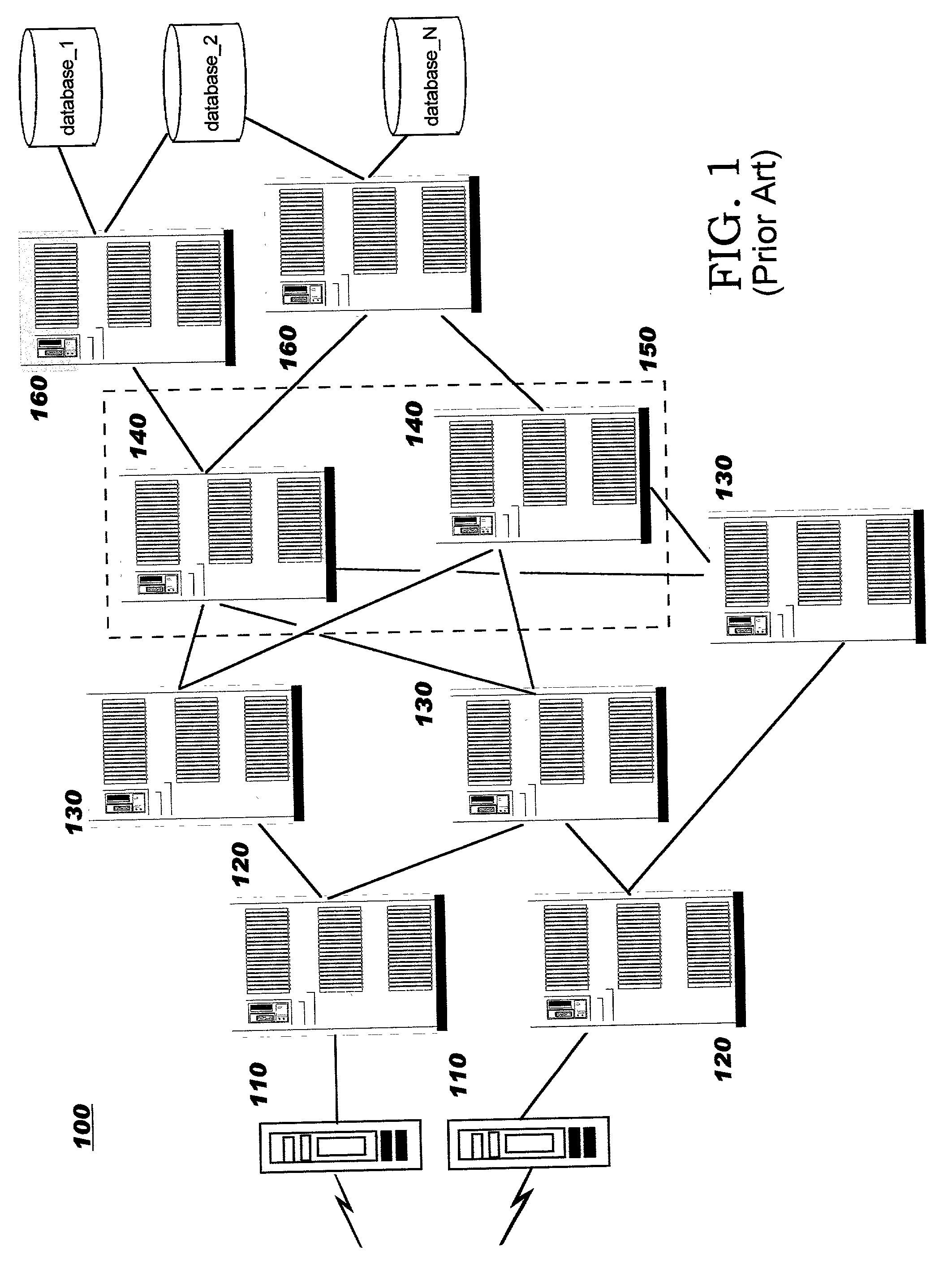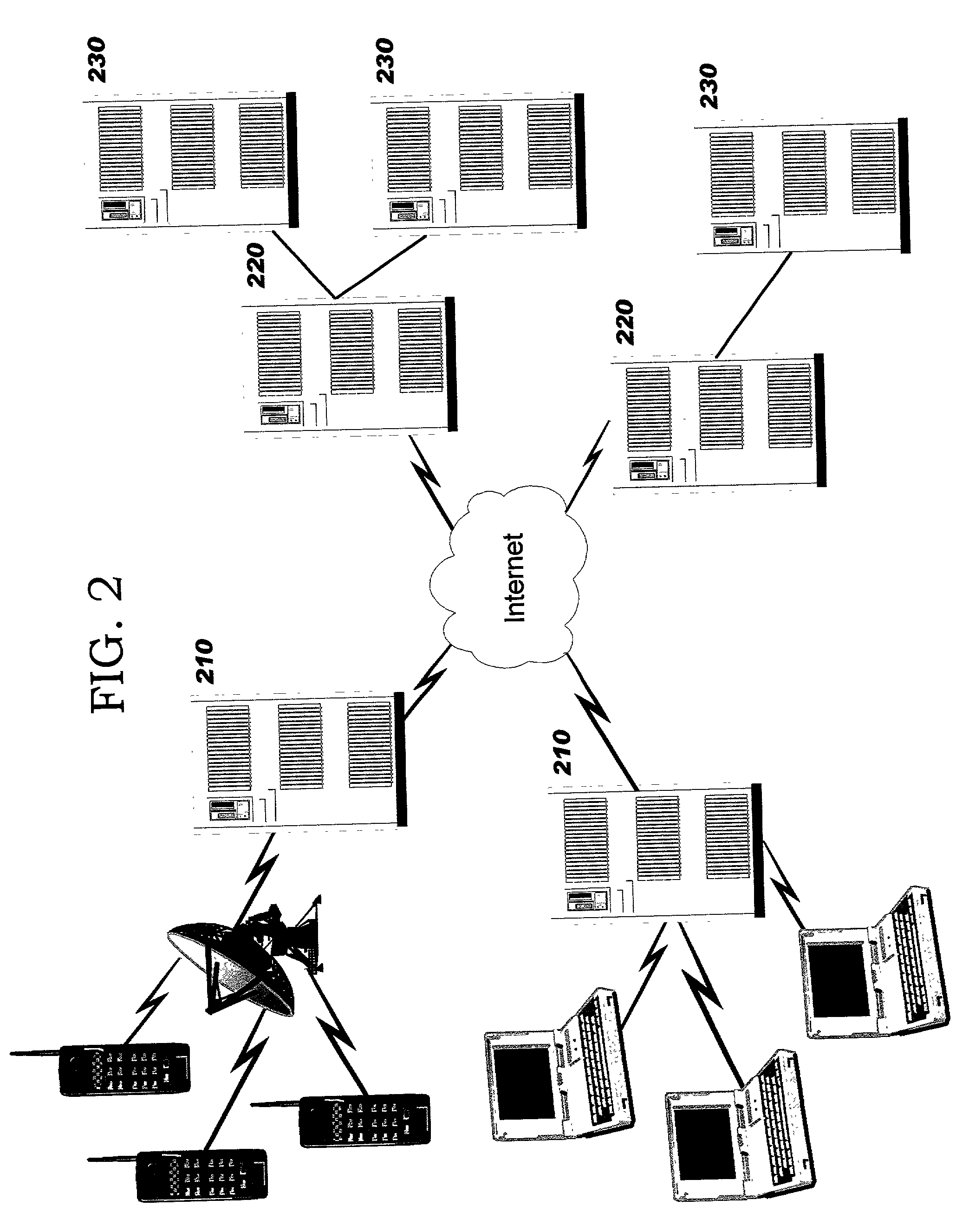Clickstream data collection technique
- Summary
- Abstract
- Description
- Claims
- Application Information
AI Technical Summary
Benefits of technology
Problems solved by technology
Method used
Image
Examples
Embodiment Construction
[0041]The present invention defines a clickstream data collection technique which enables collection of granular performance, hit, and user navigation intelligence. Data is collected regarding an end user's navigation path among a series of Web documents, and an inventory of the objects contained in the rendered documents is also collected. This is so even when documents and / or contained objects may be stored at a client-side cache or network cache. The present invention builds on techniques described in the related inventions, U.S. Ser. No. 09 / 557,708 titled “URL-Based Sticky Routing Tokens Using a Server-Side Cookie Jar” (hereinafter referred to as “the first related invention”) and U.S. Ser. No. 09 / 825,078 titled “Quality of Service Improvements for Network Transactions” (hereinafter referred to as “the second related invention”). The present invention may be used, however, without the teachings of the second related invention, as will be described.
[0042]The teachings of the firs...
PUM
 Login to View More
Login to View More Abstract
Description
Claims
Application Information
 Login to View More
Login to View More - R&D
- Intellectual Property
- Life Sciences
- Materials
- Tech Scout
- Unparalleled Data Quality
- Higher Quality Content
- 60% Fewer Hallucinations
Browse by: Latest US Patents, China's latest patents, Technical Efficacy Thesaurus, Application Domain, Technology Topic, Popular Technical Reports.
© 2025 PatSnap. All rights reserved.Legal|Privacy policy|Modern Slavery Act Transparency Statement|Sitemap|About US| Contact US: help@patsnap.com



